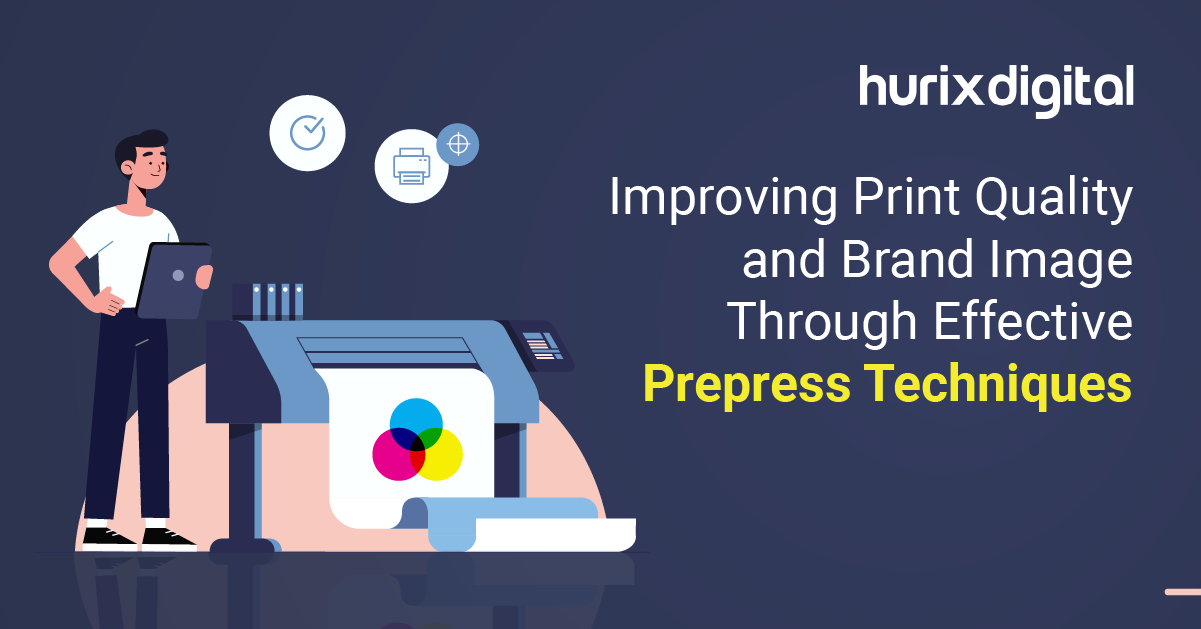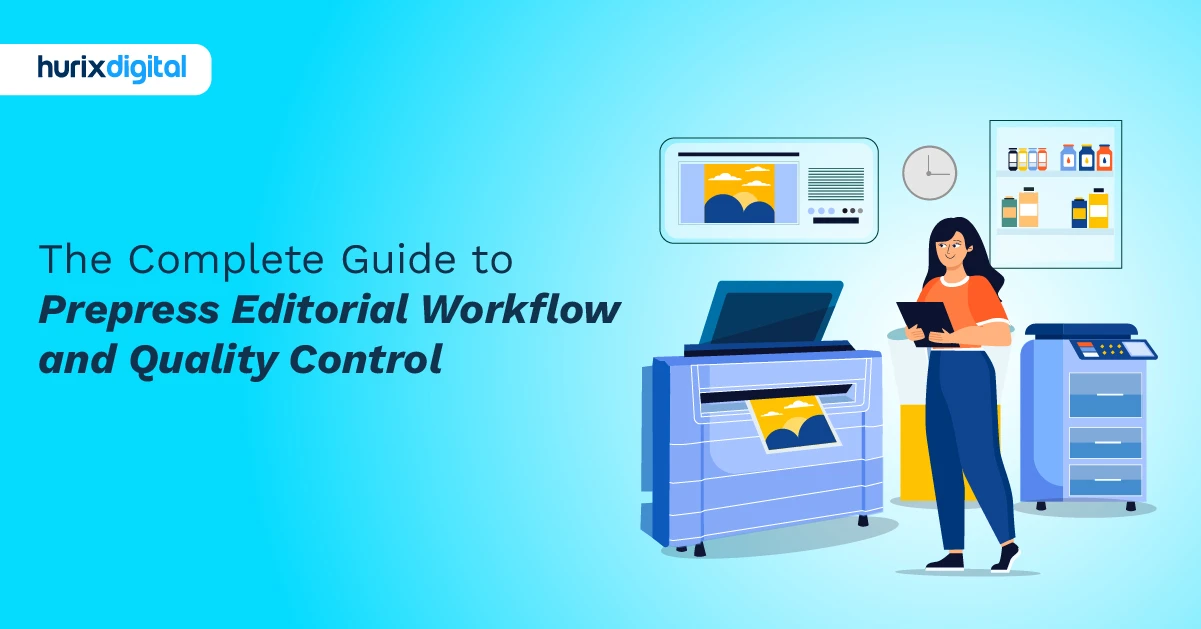
Improving Print Quality and Brand Image Through Effective Prepress Techniques
Summarize with:
Prepress in the publishing industry occupies a critical position, serving as a bridge between digital design and the tangible world of printed materials. This encompasses a series of procedures undertaken to transform a computer-generated layout into a file fully optimized for printing.
Without prepress, a computer-generated design could encounter multiple issues upon reaching the printing press. Alignment, color accuracy, and formatting inconsistencies could all potentially mar the final product.
Prepress software forms the cornerstone of this process. This specialized computer comprises a suite of computer programs specifically designed to prepare digital files for the printing press. It acts as a crucial checkpoint, ensuring a smooth transition from the initial design to the final product.
Table of Contents:
The Prepress Workflow
This multi-stage process involves critical steps to ensure exceptional quality and consistency throughout the printing process.
Let’s delve into the stages of this transformation:
1. Pre-flighting
The printing prepress process commences with pre-flighting, a careful examination conducted by skilled professionals. Their keen eyes scrutinize the graphics file, ensuring it possesses all the necessary elements for a successful print run. This rigorous inspection involves:
- Image Resolution and Format: Verifying that images possess adequate resolution and adhere to compatible printing formats.
- Color System Configuration: Confirm that the color system is established correctly, guaranteeing accurate color reproduction on the printed page.
- Font and Layout Inclusion: Ensuring all fonts and layout elements are present within the file, preventing inconsistencies or missing components in the final product.
During pre-flighting, the file might undergo conversion to a more printer-friendly format, such as PDF. It is a crucial quality control measure, identifying potential printing issues early on and enabling swift rectification before the job enters the printing stage.
2. Proofing
Once the pre-flighting stage successfully concludes, the workflow progresses to the creation of a proof. It serves as a near-exact representation of the final printed work, offering a crucial opportunity for the printer professionals and the client to verify that the desired outcome is achieved.
In most contemporary projects, proofs are generated in PDF format, allowing for swift electronic delivery to clients for immediate approval.
This stage promotes an environment of collaboration, ensuring that all parties are in complete agreement regarding the final appearance of the printed materials. A physical proof might be produced for projects that necessitate finishing operations like folding or binding, to demonstrate how the finished product will be constructed.
3. Printing and Quality Control
Once the printing plates are successfully created, the printing run can commence. Dedicated printer professionals continuously monitor quality throughout the process to maintain consistency throughout the entire print run.
Finally, the completed printed materials are shipped to the client, often accompanied by an additional quality control step to verify they align precisely with the client’s specifications.
Also Read: The Impact of Prepress on Print Quality and Brand Image
How Prepress Services Elevate Print Quality and Brand Image
The value of prepress extends far beyond simply getting your files ready to print. For brands, prepress techniques offer a potent combination of enhanced brand image and superior print quality.
1. Brand Trust Through Consistency
Consistency in visual identity is the bedrock of brand recognition and trust. Prepress technology ensures that all printed materials flawlessly represent the brand, preventing inconsistencies that could erode customer confidence.
Prepress solutions are essential because they ensure that brand guidelines—specifically, color schemes, typefaces, and design components—are properly followed on all printed products, including business cards, packaging, brochures, and flyers.
The brand imprints itself on the customer’s memory by maintaining an unwavering focus on detail and projecting an image of professionalism. Inconsistencies, on the other hand, can create confusion and dilute brand messaging.
2. Ensuring Visual Quality
The success of any printed material hinges on its visual appeal and clarity. Prepress software empowers the creation of high-quality outputs by addressing critical aspects of file preparation.
One such aspect is color management. To guarantee precise color reproduction on the printed page, prepress specialists follow stringent printing prepress standards and employ sophisticated color management techniques. It entails using complex equipment and producing color proofs to ensure the printed colors accurately reflect the original design intent.
3. The Expertise of Prepress Professionals
Prepress methods automate a lot of work, but nothing can replace the personal touch. Proficient prepress technicians have an excellent eye for detail and a thorough understanding of the printing procedures.
They carefully check digital files for potential design defects or discrepancies with brand rules, in addition to technological issues. Their knowledge aids in locating and fixing any problems before they result in expensive mistakes in the finished printed product.
4. Streamlining Workflow and Enhancing Efficiency
Printing companies may handle more projects and save turnaround times by increasing their prepress productivity through outsourcing.
Internal design teams are relieved of the burden of time-consuming file preparation, proofing, and color management. This newfound freedom allows them to focus on their core strengths: developing innovative and impactful design concepts that truly embody the brand identity.
5. Cross-Platform Compatibility
A critical aspect of prepress in the printing industry is ensuring the prepared file displays flawlessly across different devices and platforms.
This involves tasks like:
- Resolution and File Size: Images and graphics need to be optimized for both high-resolution displays and smaller screens on mobile devices. Implementing prepress optimization techniques allows adjustment of image resolution and file size to achieve a balance between quality and efficient loading times.
- Font Embedding: Guaranteeing that the intended fonts are displayed correctly across different devices is crucial. Prepress software embeds the necessary fonts within the digital file, eliminating issues like font substitution or missing characters.
- Interactive Elements: For certain digital publications, prepress techniques might involve testing and optimizing interactive elements like hyperlinks, embedded videos, or animations. These elements need to function seamlessly across various platforms.
6. Quality Control and Previews
Prepress software facilitates the creation of digital previews, allowing authors and publishers to visualize the final appearance of the publication on different platforms.
Previews allow for the visualization of how elements like text, images, and graphics interact with each other on the page. This enables the identification of potential layout problems, such as text overflowing into margins or images obscuring crucial information.
Addressing these issues upfront leads to a well-balanced and visually appealing final product. Digital previews provide authors and publishers with a clear picture of how their publications will appear in print. This newfound confidence translates into a stronger brand image, as they can assure customers of a high-quality, well-crafted final product.
Check out EXCLUSIVE: Hurix Mini-Book: Effective Training Techniques for Enterprises with Distributed Workforce
Final Words
Prepress substantially contributes to a seamless and effective printing process by optimizing resource allocation and streamlining tasks.
It is essential to ensure printed materials successfully communicate brand messaging to the intended audience while making a good impression on them in a world where visual communication is widely used.
Hurix Digital‘s complete publishing toolkit empowers you to transform your vision into a masterpiece. Our team of seasoned professionals employs prepress best practices and brings unparalleled expertise and in-depth knowledge of the latest style guides to the table.
Connect with us now!
Summarize with:

Vice President – Content Transformation at HurixDigital, based in Chennai. With nearly 20 years in digital content, he leads large-scale transformation and accessibility initiatives. A frequent presenter (e.g., London Book Fair 2025), Gokulnath drives AI-powered publishing solutions and inclusive content strategies for global clients
 A Space for Thoughtful
A Space for Thoughtful 

